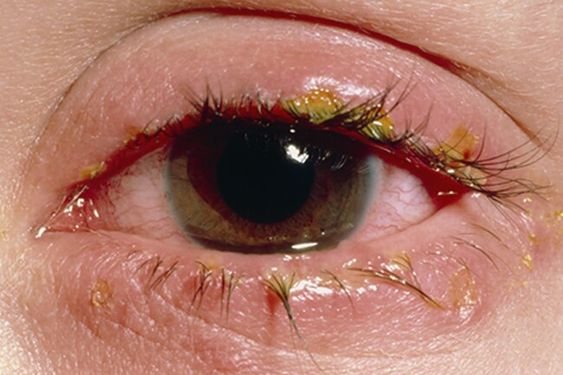What is Commonly Misdiagnosed as Pink Eye?
Pink eye, also known as conjunctivitis, is a common eye infection that causes the white part of the eye to become inflamed and red. However, several other eye conditions can mimic the symptoms of pink eye, leading to misdiagnosis. Here are some of the most common conditions that are often mistaken for pink eye:
Allergic Conjunctivitis
Allergic conjunctivitis occurs when the eyes react to allergens such as pollen, dust mites, pet dander, or certain medications. Symptoms include redness, itching, tearing, and swelling of the eyelids. Unlike infectious conjunctivitis, allergic conjunctivitis is not contagious and is usually bilateral (affecting both eyes simultaneously). Learn about How Long Does Epididymal Hypertension Last
Bacterial Conjunctivitis
Bacterial conjunctivitis is caused by bacteria such as Staphylococcus aureus, Streptococcus pneumoniae, or Haemophilus influenzae. It presents with symptoms similar to viral conjunctivitis, including redness, discharge (often yellow or green), and crusting of the eyelids. Bacterial conjunctivitis is highly contagious and can spread through direct contact.
Viral Conjunctivitis
Viral conjunctivitis is typically caused by adenoviruses and is highly contagious. It leads to redness, watery discharge, and discomfort in the affected eye(s). While viral conjunctivitis often resolves on its own within a few days to a week, it can be mistaken for bacterial conjunctivitis due to similar symptoms. Read about Eczema vs Psoriasis

Dry Eye Syndrome
Dry eye syndrome occurs when the eyes do not produce enough tears or when the tears evaporate too quickly. Symptoms include redness, irritation, burning sensation, and blurred vision. In some cases, dry eye syndrome can mimic the symptoms of conjunctivitis, leading to misdiagnosis.
Contact Lens Irritation
Wearing contact lenses, especially for extended periods, can cause irritation and redness in the eyes. Improper lens care, using expired lenses, or wearing lenses that don’t fit properly can exacerbate symptoms, resembling those of pink eye.
Corneal Abrasions
Corneal abrasions, or scratches on the cornea, can result from injury, foreign objects in the eye, or improper contact lens use. Symptoms include redness, pain, tearing, and sensitivity to light, which may be mistaken for pink eye without proper examination. Discover about What are the 4 Stages of COPD
How Misdiagnosis Occurs
Misdiagnosis of conditions resembling pink eye often occurs due to overlapping symptoms and reliance on visual examination alone. Without proper diagnostic tests, healthcare providers may mistake other ocular conditions for conjunctivitis, leading to inappropriate treatment and prolonged discomfort for patients.
Importance of Accurate Diagnosis
Accurate diagnosis is crucial for effective treatment and management of eye conditions. Misdiagnosis can result in delayed treatment, worsening of symptoms, and potential complications. Healthcare providers must consider various factors, including medical history, symptoms, and diagnostic tests, to correctly identify the underlying cause of eye discomfort.
Diagnostic Methods for Pink Eye
Diagnostic methods for pink eye may include visual examination, evaluation of medical history, and laboratory tests. Healthcare providers may perform a slit-lamp examination, conjunctival swabbing, or antigen testing to determine the cause of conjunctivitis accurately.

Treatment Options for Pink Eye
Treatment for pink eye depends on the underlying cause. While viral conjunctivitis often resolves on its own, bacterial conjunctivitis may require antibiotic eye drops or ointments. Allergic conjunctivitis may be managed with antihistamine eye drops or oral medications. Dry eye syndrome may necessitate artificial tears or prescription eye drops to lubricate the eyes.
Prevention Strategies
Preventive measures for pink eye include practicing good hygiene, avoiding touching the eyes with unwashed hands, and disinfecting contact lenses regularly. Individuals with allergies should minimize exposure to allergens, and those prone to dry eye syndrome should use humidifiers and take frequent breaks from screen time to reduce eye strain.
Conclusion
While pink eye is a common eye condition, several other ocular conditions share similar symptoms and can be misdiagnosed as conjunctivitis. Understanding the differences between these conditions and seeking prompt medical attention is essential for accurate diagnosis and appropriate treatment. By prioritizing eye health and practicing preventive measures, individuals can minimize the risk of misdiagnosis and maintain optimal eye wellness.
FAQs
Q. Can pink eye go away on its own?
A. Pink eye, especially viral conjunctivitis, often resolves on its own within a week without treatment. However, bacterial conjunctivitis may require antibiotic therapy.
Q. Is pink eye contagious?
A. Yes, pink eye can be contagious, especially viral and bacterial forms. It’s essential to practice good hygiene to prevent its spread.
Q. Can I wear makeup if I have pink eye?
A. It’s best to avoid wearing makeup while experiencing symptoms of pink eye to prevent further irritation and contamination of cosmetics.
Q. How long does it take for pink eye to clear up?
A. The duration of pink eye varies depending on the cause. Viral conjunctivitis may resolve within a week, while bacterial conjunctivitis may require antibiotic treatment and can last longer.
Q. Can I go to work or school with pink eye?
A. It’s advisable to stay home until symptoms of pink eye, especially discharge and redness, have resolved to prevent spreading the infection to others.




